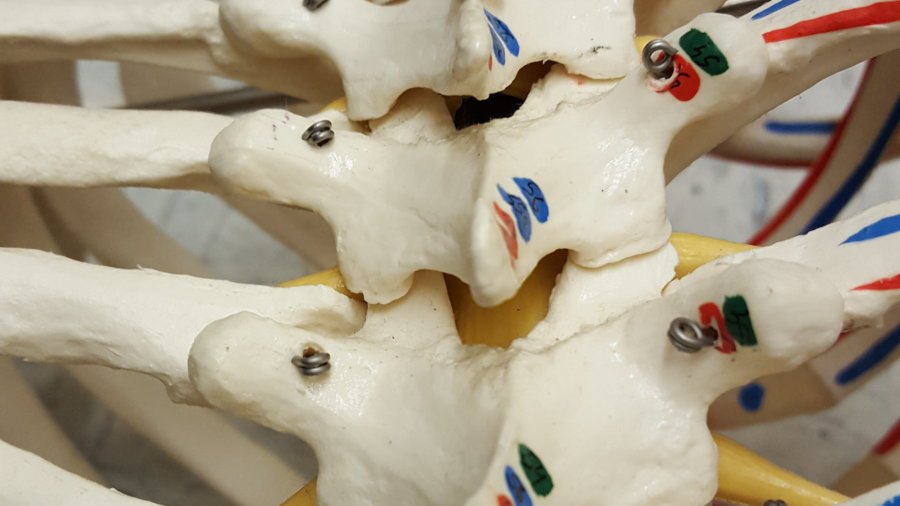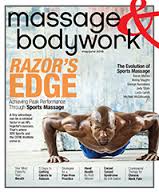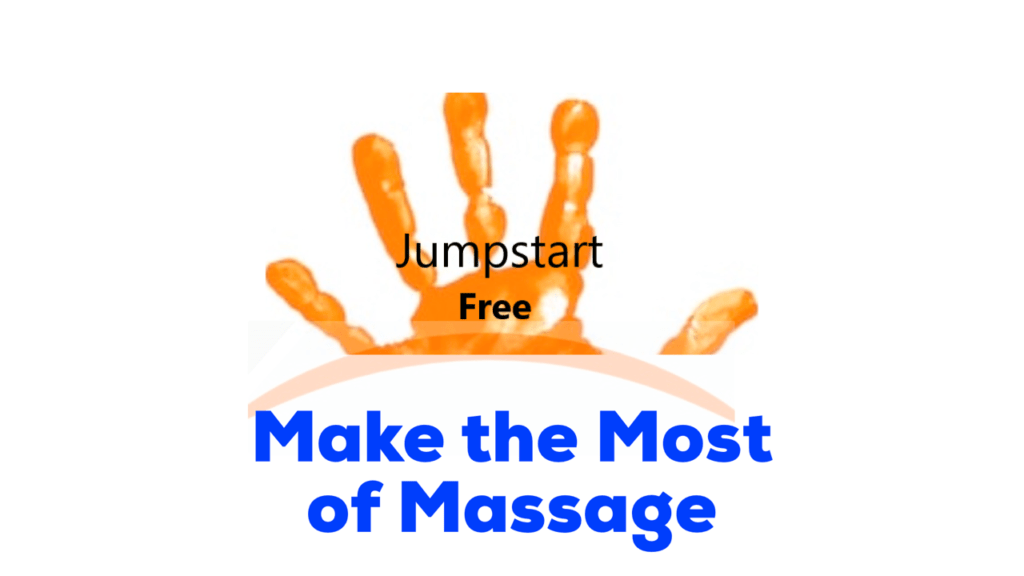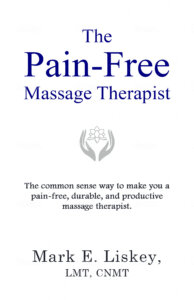The multifidus and rotatores are in the lamina groove. Early on in my career, I shied away from anything close to the spinous processes. But neuromuscular therapy taught me that these muscles can be influenced and clients REALLY like getting them worked.
The Deep Back Muscles
Here are the multifidus and rotatores:
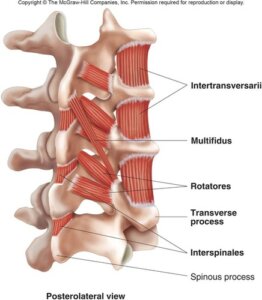
They multifidus stabilizes joints within the spine. The rotatores lie underneath the multifidus and are involved in postural control.
Why Work Them?
There are five reasons why I think that working the multifidus and rotatores improves the quality of a pain relief massage.
- When you’re working the multidus and rotatores, you’re also working a lot of other muscles.
For instance, let’s say you’re massaging in the upper-thoracic lamina groove. As you’re working into the lamina groove, you’re also pressing into the trapezius, rhomboids, and other back muscles. It’s literally one stop shopping.
- You’re giving the client a new experience.
I’ve found that most therapists don’t do focus work in the lamina groove. So a first-time client will probably be pleasantly surprised if you work the multifidus and rotatores.
- From a trigger point standpoint there could referrals.
If you subscribe to trigger point theory, then there could be pain referral patterns stemming from these deep back muscles.
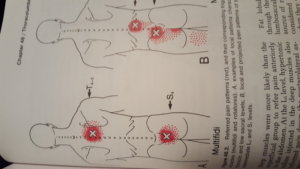
(Myofascial Pain and Dysfunction The Trigger Point Manuel, Janet G. Travell, M.D., David G. Simons, M.D., Volume 1, p. 639)
- Allows you to really compare left to right.
It’s fairly easy to compare left to right when it comes to the multifidus and rotatores, mainly because you can use the spinous process as a reference point.
By comparing the left side to the right side, you can customize your massage. For instance, say I wanted to desensitize a pain area occurring around T8. If I found a higher degree of pain (not hyper-pain) in the right, T8, lamina-groove muscles, I would spend more time there than I would on left T8 side.
- You can scratch the client’s itch.
My clients really like the lamina groove work. It’s not uncommon to have a new client say, You got the spot that I’ve wanted someone to get for years. I’m not special. Anyone can get this same response. You just need to get your lamina groove reps in.
Also, when working through clothes (like when doing demo massages), targeting the multifidus and rotatores using static pressure is a very effective pain relief massage. I would argue it’s as effective as doing a regular skin-to-skin massage.
Three Steps
Here’s how to get comfortable working these deep muscles.
- Find the spinous processes.
Once you find the spinous processes, you’ve won the battle.
By the way, don’t be scared of the spinous processes. They are you friends (reference points).
- Go just lateral of the spinous processes (maybe 1/2 inch).
For extra assurance, keep in contact with the spinous processes. You can use fingers from your pressing hand or non-pressing hand to maintain contact.
- Press down into the lamina groove with a thumb/finger or body parts combination.
Here’s a video on how I use body part combinations in the lamina groove: Combining Body Parts for the Lamina Groove Video. (In the video I use the term power tools. Now I call power tools “body part combinations”.)
As you’re learning to calibrate your pressure in the lamina groove, you may first want to use a pain scale system.
Here’s the pain scale system I use: tell the client to think of a pain scale from 1 to 10 where 1 is not much pain and 10 is a lot. When you press on an area, you want your pressure to feel like it’s registering in a 3 to 4 range (in acute pain areas) or a 4 to 5 (in non-acute pain areas).
Here’s my pain-scale-system tutorial video if you want to take a deeper dive: Pain Scale Video
Experiment With Massage Tools
Massage tools (especially the T-bar) are ideal for the lamina groove muscles. Why? Because with massage tools you can generate pressure effortlessly. In addition, your pressure will be more precise than your thumbs or fingers.
Here’s how I do pain relief massage in the lamina groove using massage tools: Massage Tool Work In Then Lamina Groove Video.
Intention is 50% of Massage
Intention plays an important part in massage. When working in the lamina groove and directing your pressure to influence the multifidus and rotatores, you’re not only affecting those muscles, you’re impacting other muscles. In essence, you are getting a big bang for your effort.
In my experience, clients respond favorably to intentional and focused pressure in the lamina groove. For example, I can sometimes find that one spot that a client wants addressed that no one has addressed before.
Working the rotatores and multifidus is not difficult. You just need to find the spinous processes, go lateral and press into the lamina groove. When first starting out keep a guide finger on the spinous processes until you get comfortable working in the lamina groove.
Here are the video tutorials to get you on your way:
Combining Body Parts for the Lamina Groove Video
Massage Tool Work in the Lamina Groove Video
Once you start getting positive feedback and results, you’re going to be glad that you ventured into the lamina groove.
Home Study Massage Tools (2.5 CEU) Course
Get good with massage tools and you’ll save your hands and you’ll be able to deliver precise pressure like nobody’s business. Precise pressure is not only what my clients love, it’s also what differentiates me from the massage therapist that I compete with around town.
How to Use Massage Tools Fearlessly